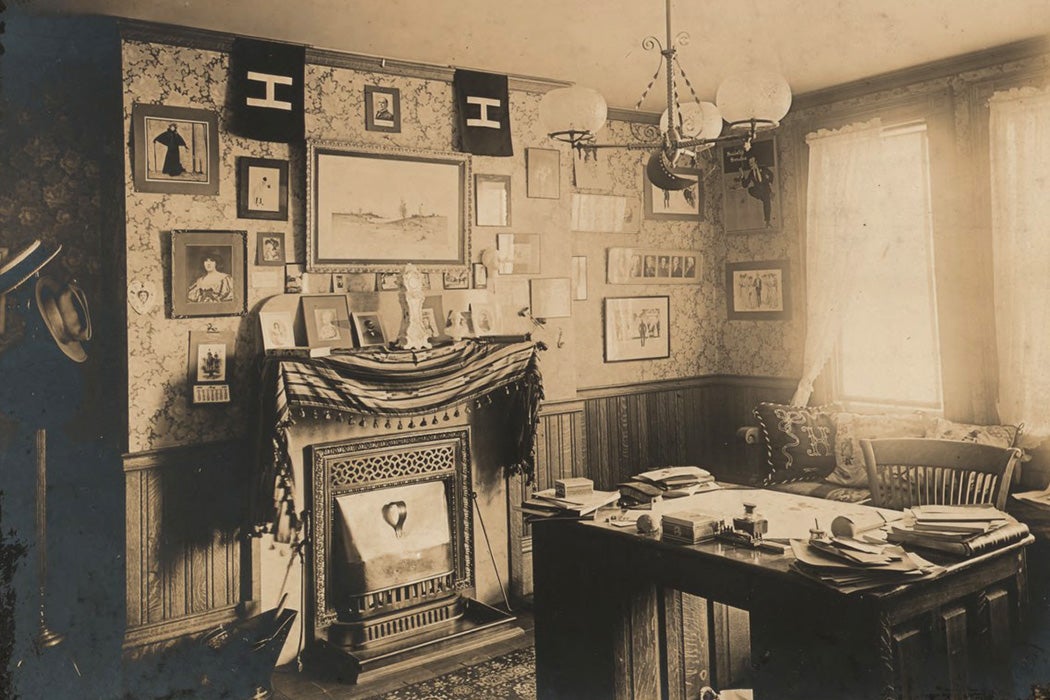Huddling in the cold in winter might seem like a problem mainly faced by the poor. But, as geographer William B. Meyer writes, through the nineteenth century, this was also the fate of the students of Harvard, a result of a widespread elite New England distaste for efficient heating systems.
When English settlers arrived in Massachusetts in the early seventeenth century, Meyer writes, they recreated the open fireplaces and broad chimneys of their home country—a wildly inefficient system in a place as cold as New England. Large fires created powerful drafts, drawing cold air into the houses through gaps and cracks. So much heat was sucked up the chimney that, as one New Englander wrote in 1828, “one would think that the warmth generated by the combustion of wood, or other fuel was considered as a nuisance.”
Fireplaces also demanded lots of fuel. As Boston and other large communities grew, they exhausted the supply of trees nearby. In some years, there was so little wood that Harvard was forced to extend winter break or grant leaves to students who found themselves “destitute of fewel” for their fireplaces.
There were, of course, other options for staying warm. Native Americans also used open fire heating, but they insulated their structures tightly so that they stayed very warm—a model the settlers regarded as too “smoky, smelly, and stuffy” to imitate, Meyer writes.
French, German, Swedish, and Dutch settlers brought another system: closed wood-burning stoves, which were more efficient and kept homes warmer than fireplaces. But many Anglo-Americans disliked this option as well. In 1777, John Adams visited a Pennsylvania German home and found it disagreeable due to “the heat, the want of fresh Air.”
Eventually, Meyer writes, lower-income New Englanders began adopting closed stoves for their relative fuel economy. But this connected the stoves with poverty in the public imagination, only adding to elite hostility to adopting them.
Like most wealthy New Englanders, Harvard Medical School faculty distrusted closed stoves and regarded fireplaces as the healthiest heating option, helping to ensure that the college’s dorms didn’t adopt more efficient heating methods. This went along with the general sense at Harvard that it was best to avoid excessive comfort in favor of a simple, strenuous lifestyle.
Weekly Newsletter
In the early nineteenth century, Meyer writes, some wealthy Bostonians—including many Harvard faculty members—did begin using wood- or coal-fired central heating systems. But newspapers and medical experts instructed New Englanders to only run these furnaces in concert with open fireplaces to promote ventilation and avoid overheating. The worries about excessive heat mirrored the widespread belief that hot parts of the world were inherently unhealthy. One newspaper warned that exclusive use of central heating “amounts to voluntarily incurring the disadvantage of a tropical climate.”
Meanwhile, most Harvard dorms didn’t adopt furnaces at all until the early twentieth century. As late as the 1890s, students described having to break up ice in their water pitchers each morning.
Support JSTOR Daily! Join our new membership program on Patreon today.







